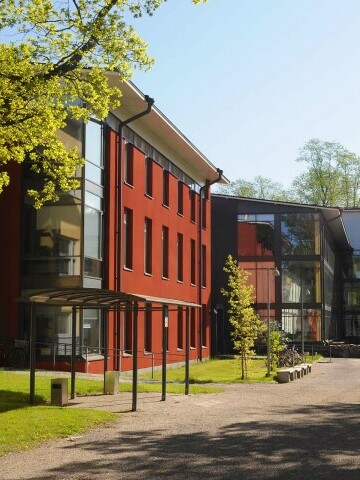
Forskarpresentation: Fábio Balotari Chiebáo

Fábio Balotari Chiebáo
Fábio Balotari Chiebáo is an Ecologist with a strong interest in nature conservation, particularly birds. At present, his research is focused on species distribution modelling and spatial prioritisation in the context of wind energy in Finland. The applicability of results is an integral part of his research aims.
Background
I obtained my First Degree and Teaching Certification in Biological Sciences in 2007 from the Universidade Estadual de Maringá, Brazil. Thereafter, I followed a Master of Research Degree in Ecology and Environmental Biology at the University of Glasgow, Scotland. My academic life was then followed by a gap, during which I was involved in various conservation-oriented projects in Europe and truly developed my interest in birds. In 2013, I started my PhD at the University of Turku, focusing on the spatial behaviour of the white-tailed eagle in relation to wind energy in Finland. I defended my doctoral thesis in 2018.
In recent years, I have become increasingly interested in the use of Geographic Information Systems (GISs), especially R, for a range of applications in ecological research.
In 2020, I started my postdoctoral research at Novia University of Applied Sciences with the project “Spatial prioritisation to minimise the negative impacts of wind energy on birds, and assessment of the potential benefits of its infrastructure on early-community biodiversity”. The project is being conducted in collaboration with Patrik Byholm (Novia University of Applied Sciences and University of Helsinki), and it also involves other collaborators from the University of Helsinki and the Swedish University of Agricultural Sciences.
Research interests
- Spatial ecology with a particular focus on birds
- Species distribution modelling
- Conservation biology
- R programming
Publications
- Balotari-Chiebao, F., Valkama J. and Byholm P. 2021. Assessing the vulnerability of breeding bird populations to onshore wind-energy developments in Finland. Ornis Fennica. In Press.
- Balotari-Chiebao, F., J. E. Brommer, H. Tikkanen, and T. Laaksonen. 2021. Habitat use by post-fledging white-tailed eagles shows avoidance of human infrastructure and agricultural areas. European Journal of Wildlife Research 67: 1–7.
- Tikkanen, H., Balotari-Chiebao, F., Laaksonen T., Pakanen, V. M., Rytkönen, S. 2018. Habitat use of flying subadult White-tailed Eagles (Haliaeetus albicilla): implications for land use and wind power plant planning. Ornis Fennica 95, 137–150.
- Balotari-Chiebao, F., Brommer, J.E., Saurola P., Ijäs A., Laaksonen T. 2018. Assessing space use by pre-breeding white-tailed eagles in the context of wind-energy development in Finland. Landscape and Urban Planning 177, 251–258.
- Balotari-Chiebao, F., Villers, A., Ijäs, A., Ovaskainen, O., Repka, S., Laaksonen, T. 2016. Post-fledging movements of white-tailed eagles: Conservation implications for wind-energy development. AMBIO. A Journal of the Human Environment, 45, 831–840.
- Balotari-Chiebao, F., Brommer, J.E., Niinimäki, T., Laaksonen, T. 2016. Proximity to wind-power plants reduces the breeding success of the white-tailed eagle. Animal Conservation 19, 265–272.